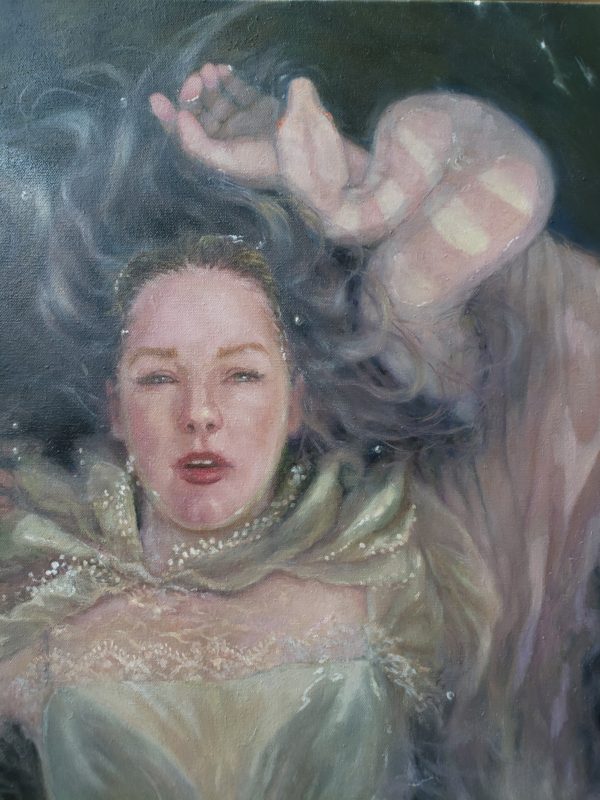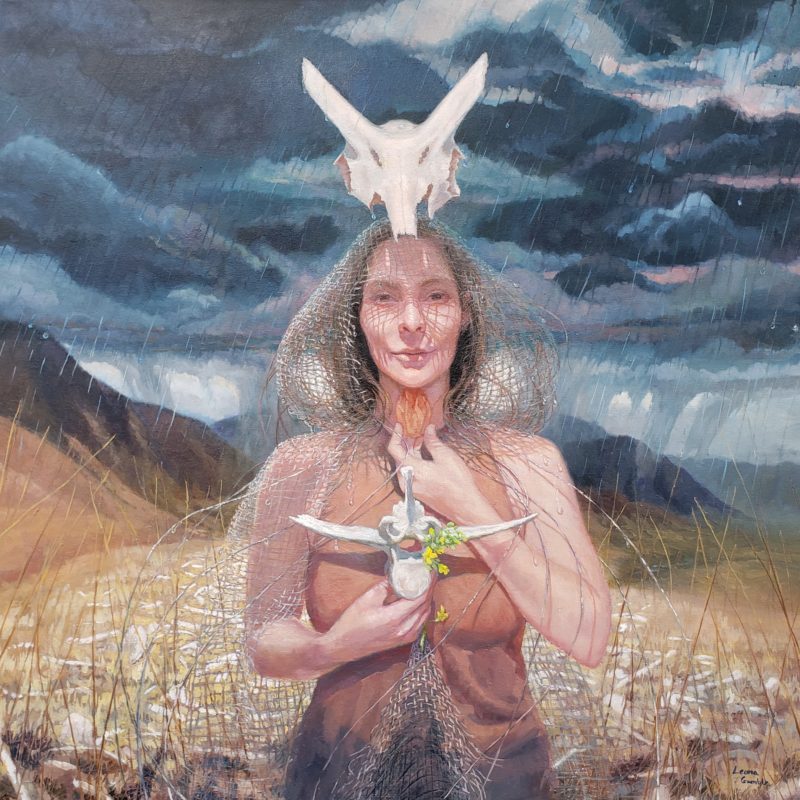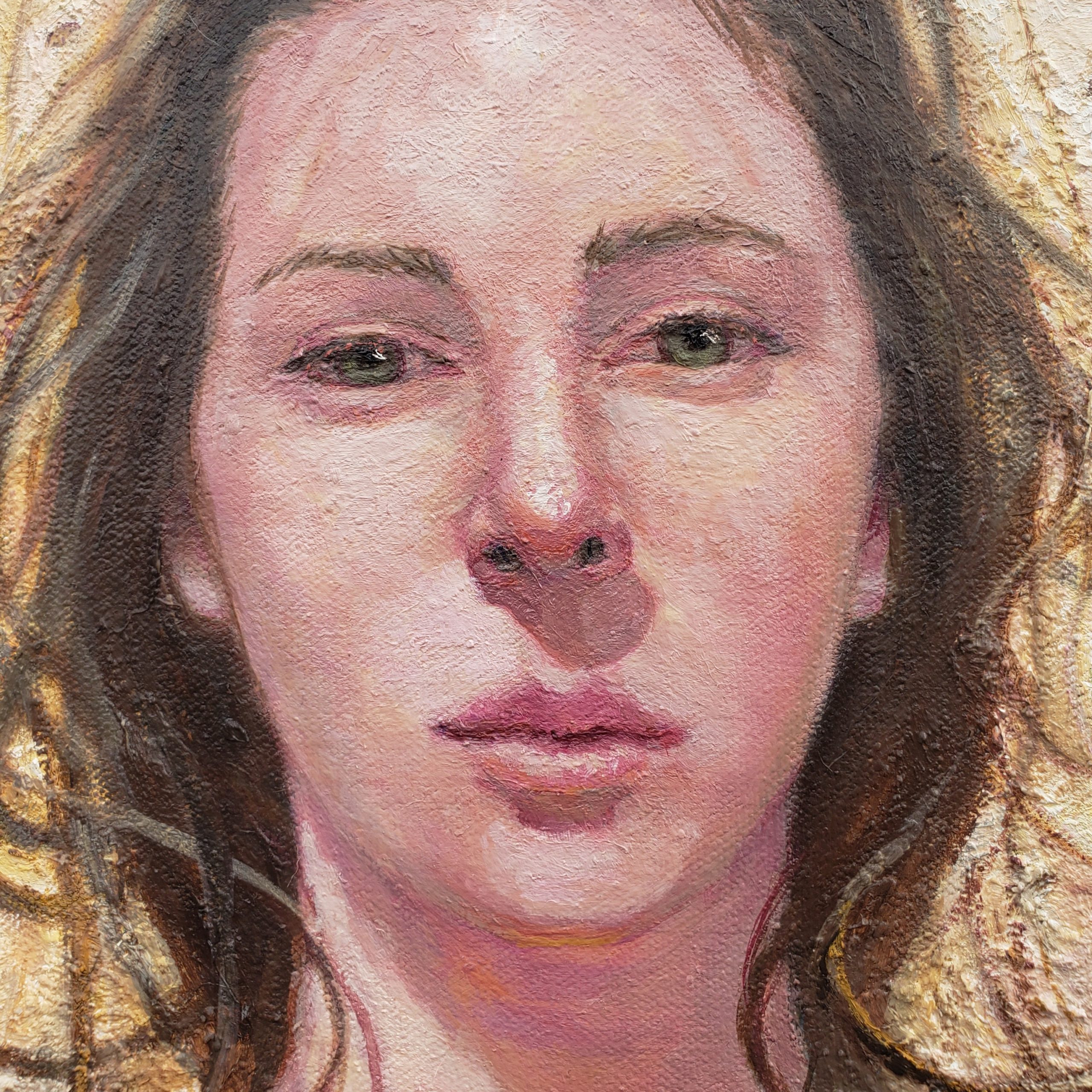Leona Gamble creates enigmatic, dreamy paintings that explore the subconscious and the natural world. Her universe mixes references to familiar myths with her own mythology and symbolism. Fine Art Shippers spoke with Leona Gamble about her journey as an artist, solitude, and the interconnectedness of life.
Artist Talk: Leona Gamble and Her Personal Myths
In your artist statement, you mention your interest in exploring solitude and isolation. Where does this interest come from?
Leona Gamble: I think it comes from a deep awareness that we each go our own way. We may have family and friends who support us, but we still live and die alone, as sad as that is. We are the ones who have to deal with these huge intimate spaces within ourselves and find answers to the questions that matter to us. It is our own journey, and no one but ourselves can do that. So this isolation reflects the inner space within ourselves.
I sense a kind of otherworldliness in your works. How would you describe the world you paint?
I draw heavily on symbolic elements. But I also have my own language. The symbols I use are natural elements because nature is so dear to me. This symbolism has its roots in my childhood: I grew up in the countryside, surrounded by animals. I was lucky enough to have a loving and supportive family, but I was always very isolated. I loved to be alone or with the animals and spent hours watching them, lost in my world.

Are there recurring symbols that appear regularly in your paintings?
Most recently, bones. I do not see them as creepy or gross. For me, bones are something fundamental. They are an inner structure that supports us and accompanies us throughout our lives. They grow with us. When we die, they become an external, anthropological structure that can reveal something about us, both on the individual and social levels.
Another symbolic element that has found its way into my work is mushrooms. I love the idea that mushrooms are connected. They go deep into the earth, where the whole system of connections is formed. Besides, mushrooms belong to a different realm than plants and bacteria; they stand between animals and plants. I find this a fascinating illustration of the complexity of life.
As a child, you observed nature. Were you interested in science and the way it explains the world and nature in particular? Do you incorporate the scientific view into your art?
My father is a microbiologist and my mother is an artist. My personality was influenced by both of them. To this day, I am interested in science and psychology. Although my work is metaphorical, it is grounded in the physicality of the world. On the other hand, my art is also an exploration of the human psyche and my own consciousness. I would say there are different levels where I talk about myself and life at large.
What art and artists have influenced you?
Definitely the Pre-Raphaelites. I love their dreamy paintings, they are so beautiful. But they are not just that, they have substance. Sometimes it is hard to articulate it, but you know it is there. Beauty for beauty's sake is boring. And when I feel like I have created a painting that is just beautiful, I destroy it. I have destroyed or painted over several of my works. Beauty without an additional layer of meaning does not interest me. A beautiful ripe fruit always has a rotten one next to it. That is the cycle of life.
You also work as a private art mentor. What is your teaching approach and who do you work with?
There is no curriculum. My approach is very focused on each individual. I begin by asking my students what they want to create and what subjects are important to them. If you want to explore landscapes, let's do that. And then we start looking for the mediums and visual language for that. We talk about composition and other technical aspects, but also how they feel about it. Developing the ability for introspection is really important if you want to create something. I have worked with children and adults, and it's always rewarding to see students progress and gain an understanding of art that goes beyond the purely physical process.

As an artist, you often have to ship your artwork – to exhibitions, events, or private clients. What is important to you in this regard? What art shipping requirements do you have?
What matters most is the quality and safety of the service. I have to be sure that my works will not be damaged in any way and that they will be delivered on time. In that sense, trust is a big thing. Then comes the price. I can afford to pay a certain amount because beyond that price it would not make sense to ship. An artist's life is often a trade-off between the time and effort you put into creating the artwork and the money you get for it.
What has been your experience with Fine Art Shippers?
I shipped several paintings with you to an exhibition in Canada a few years ago. It was great! Thank you for that.
Photo courtesy of Leona Gamble
